A tick appeared on the orchid: causes and solutions to the problem

Experienced farmers are well aware that the appearance of ticks on an orchid is a very common occurrence. There can be many reasons for this - this is improper care of the plant, and changes in temperature and humidity, and a lack of fertilizing. To get rid of a dangerous pest, you should know and be able to apply some methods and technologies.

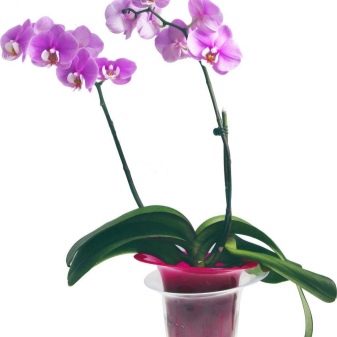
Description of pests
Orchids are some of the most beautiful flowers in the world, but these delicate plants are often attacked by various parasites. There are certain prerequisites for the development of such negative phenomena.
Entomologists say that a tick is not an insect, but an arthropod. The peculiarity of these creatures is phenomenal survival in a variety of conditions. The difficulty lies in the fact that the false spider mite is microscopic in size and it is extremely difficult to see it on flowers. Its parameters do not exceed half a millimeter, and the color of the calf depends on the color of the plant that it eats. The chitinous cover of these insects can be red or green in color.
Adult ticks have eight legs, but their movement along the plant is extremely unhurried. While eating an orchid, the mite simultaneously weaves a web that envelops the stems and buds of the plant. If there is a cobweb, it means that in the near future new generations of pests will appear.
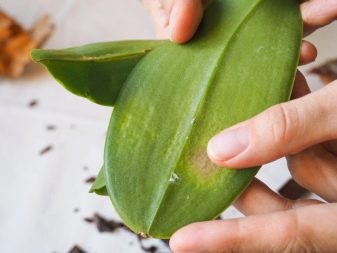

This parasite is dangerous in that its reproduction occurs in geometric progression. In just 2-3 weeks, the larva turns into an adult. This creature lives no more than 40 days, but this is enough for it to destroy the plant. The favorite delicacy of such insects is plant juices: the mite bites through the epidermis of the orchid and introduces into it a special enzyme that dissolves cells. Nutrient biomass arises, which the parasite sucks out.
At the site of the lesion, yellowness, white bloom, cobweb forms, after a short time this area dies off. If the thinnest cobweb appeared on the flowers and buds of the orchid, then this indicates that there are a lot of parasites on the plant, urgent measures must be taken to eliminate them. Various parasites additionally penetrate into the sites of tick lesions:
- viruses;
- fungus;
- pathogenic bacteria.
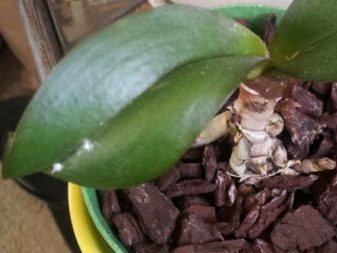

If you do nothing, the plant will quickly become covered with dark (sometimes black) spots. When this happens, the orchid is practically doomed.
Generations of mites in large numbers live in fertile soil, you can see them with a magnifying glass. The following types of mites "love" the orchid.
- Root. This parasite has 6 legs, a mustache and a body that resembles an elongated oval. Possesses good resistance, can go without food for several months. A favorite treat is the root system of various plants.
- Red spider mite. One of the most common. Tolerates poisonous drugs well. The color of the calf can be yellow and even bright orange.
- Bulbous. It has a size of no more than 0.5 mm, and this parasite is extremely clumsy. The color is dark brown, the body is oval. Short bristles are located on the body.
- Armored mite. Looks like a spider, feeds on plant roots.

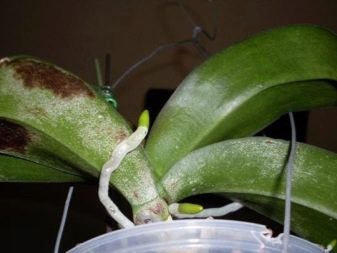
There are a number of other parasites that are very harmful to orchids.
- Thrips. These are gray flies that appear due to overdrying of the plant. Thrips feeds on sap, so the flower dies after a week or two.
- Mealybugs. They manifest themselves as a white bloom that looks like hoarfrost. They also feed on the sap of the flower, presenting an average degree of danger.
- Shield. These are flies that are covered with a dense black shell. When the insect is in the larval stage, it is not easy to find it; you need to use a magnifying glass.
- Common aphid. Appears on many plants. The insect is very fond of young leaves, flower petals. Due to the size of the aphid, it is clearly visible on the leaves.
- Fools. These are microscopic beetles that live in the substrate and are very fond of the root system. They breed if there is a low temperature and abundant watering.
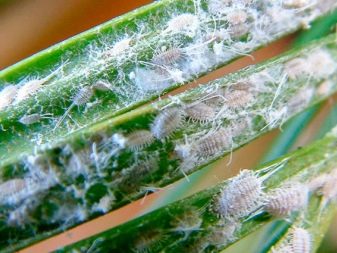
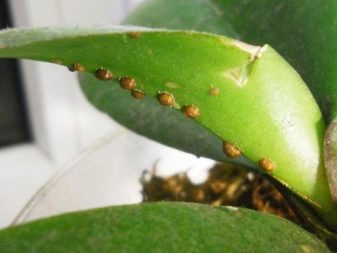
Reasons for the appearance
Infection of orchids with ticks occurs through the air. Strong winds can blow the larvae of these creatures for many kilometers. In hot, windy weather, the most fertile time for ticks "travel" around the surrounding area. During the incubation period, humidity is also important - if it is 28-42%, then the parasite will multiply rapidly. With a decrease in humidity, the development of a spider mite slows down.
A spider mite appears on an orchid when there is minimal humidity in the air, this is what provokes the active development of the pest. Ticks can completely destroy many domestic plants in a few days or transform them beyond recognition.
To effectively stop the threat, you need to understand why the parasite appeared. Often a similar phenomenon occurs when farmers buy seedlings in a store or exchange young plants with each other. Knowing the cause of the onset of orchid disease, it will be easier to eliminate its consequences.
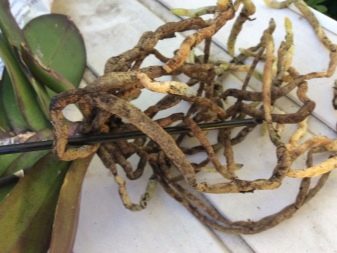
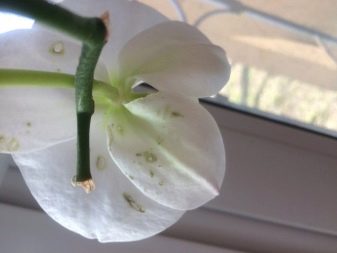
How to deal with them?
To get rid of spider mites and other types of mites at home, a number of effective measures should be taken. First of all, you need to disinfect the affected area. Diluted laundry soap should be used: one large spoonful of liquid soap is stirred in one liter of water. Using a cloth or sponge, gently wipe the surface of the plant.
It is important that the soap solution does not fall on the ground, otherwise the root system will suffer. You should wipe the pallet and the pot with a disinfectant solution, and if the orchid is on the windowsill, then it is also advisable to wipe all the planes around with a soap solution.
After that, the substrate should be poured, the plant should be covered with a transparent film, and kept in this form for at least 70 hours. The film increases the percentage of moisture, which promotes active annihilation of insects and can heal the plant. It is important to remember that the orchid is afraid of direct sunlight; the flower should be kept in the shade.
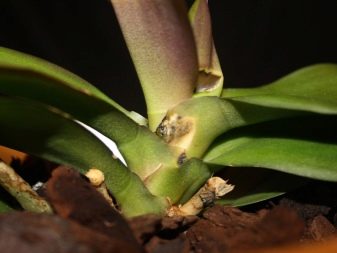
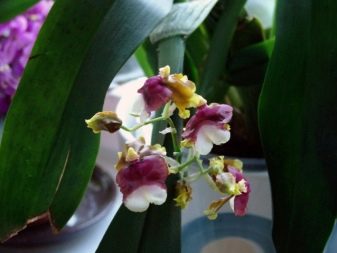
Chemicals
The most effective drugs in the fight against ticks can be acaricides:
- Aktofit;
- Fitoverm;
- "Vertimek".
Often, special chemicals are used against spider mites:
- Actellik;
- thiophos.
It is recommended to treat the plant with "chemistry" and at the same time create comfortable greenhouse conditions for it, covering it with a transparent film. Processing should be done with one of the preparations, and only then use the film. It is also important to remember that ticks are resistant parasites and can quickly produce antivenom. From time to time you will have to alternate chemical compositions.
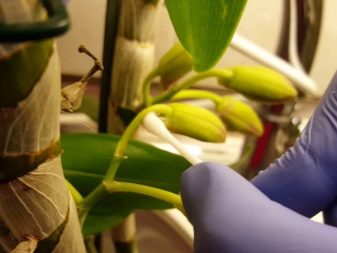
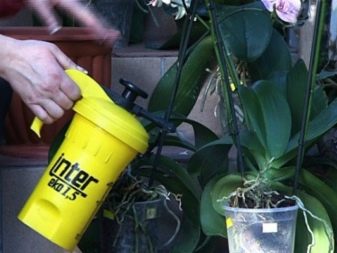
The most dangerous mite is considered to be the root one. If there are signs of infection, then urgently:
- all affected areas are cut off;
- the places of the cuts are processed with potassium permanganate with the addition of activated carbon;
- diseased flowers are taken to another room;
- the soil from the pots is disposed of;
- the pots are wiped with a disinfectant.
The most effective formulations are:
- Fitoverm;
- Actellik;
- Apollo.
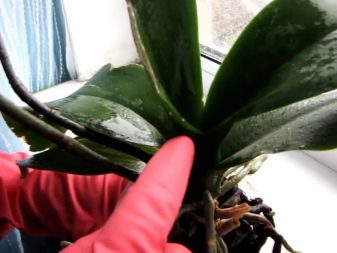
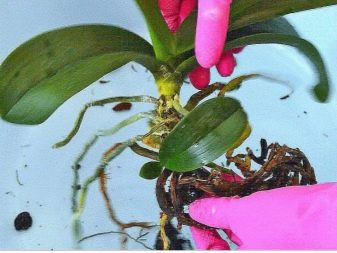
These substances are best alternated with such drugs:
- "Omite";
- "Kleschevit";
- "Vertimek";
- Dursban;
- Borneo;
- Sunmight;
- Oberon.
Each drug has its own advantages and disadvantages, much depends on the severity of the damage to the plant. If the process is at the very beginning, then such a chemical composition as "Apollo" will be enough. It helps to remove small colonies of ticks that have just begun to form.
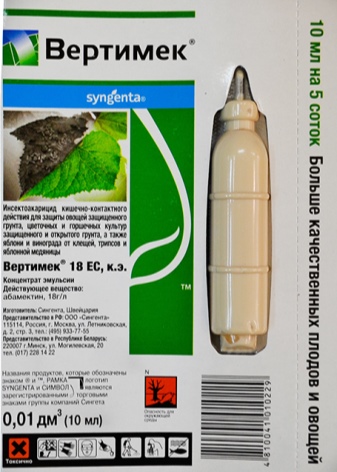
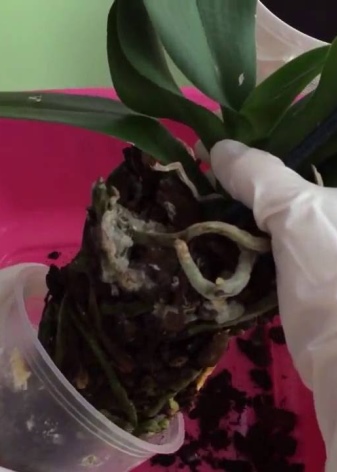
Traditional methods
Traditional methods are effective only in the initial stages of plant disease. Laundry soap solution is the most common way to treat affected areas of orchids.
A decoction of cyclamen also works well, which is able to eliminate colonies of parasites without leaving a residue. To prepare a similar composition, you should:
- take the tuber of the plant, chop it finely;
- put the pieces in boiling water and boil for 30 minutes;
- cover the broth with a lid and leave for 24 hours.
Plants can be treated with this broth for a week.
Rubbing alcohol can also be used against a tick, but it is recommended to remember that only adult plants can be coated with it.
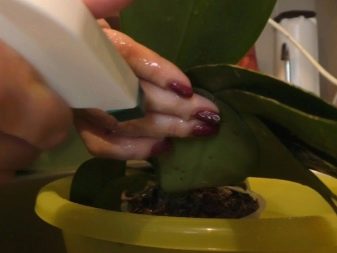
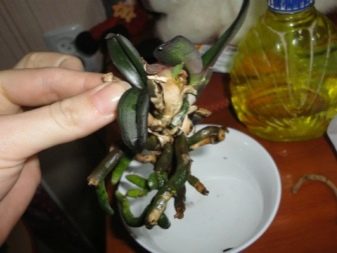
A decoction of nettle will help to activate the immunity of plants. It is done like this:
- 750 grams of fresh nettle is poured with three liters of boiling water;
- the resulting mixture is infused for 40 minutes.
When the broth has cooled, the orchid is immersed in it for 5-6 minutes.
The shell mite is considered no less harmful, it is extremely voracious and in a few days can gnaw a plant so that it will inevitably die. In this case, the orchid is removed from the soil along with the root system, soaked in water for 20 minutes. The plant is then removed and placed on a cotton rag, the roots must dry. It is recommended to do a similar procedure at least three times, after which the plant is installed in the renewed soil.
It is also important to ensure that water droplets do not collect in buds and leaves, otherwise these areas may start to rot.

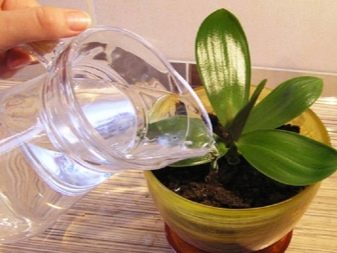
Processing rules
Each chemical has a different degree of toxicity. For example, "Actellic" is a substance containing phosphorus; it can be treated with it only in the open air. In this case, you should use personal protective methods so as not to get poisoned. Treatment with "Aktellikom" should be carried out two to three times, depending on the severity of the damage to the plant.
Thiophos is also a chemical that contains phosphorus. An extremely toxic drug that is not used at home. Used for spraying fields when they are massively infested with mites.
An effective composition is "Fitoverm", this is a biological preparation, it can be sprayed with an orchid 3-4 times a month, between sessions you should pause for 5-6 days.
The plant can be treated only when the following factors are established:
- the cause of the disease, which pest is "involved" in the process;
- the degree of damage to the orchid (severe, initial, middle stage).
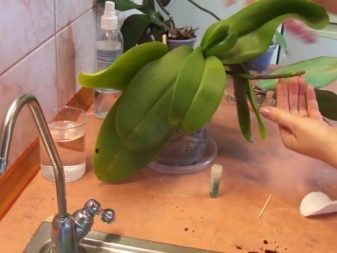
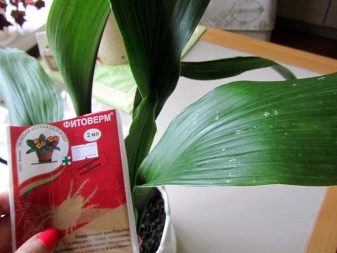
When working with chemicals, be sure to use:
- glasses;
- respirator;
- gloves.
The room must have good ventilation. If it is possible to work outdoors, then the open air will be the best option. In this case, it is best to work under a canopy, when the weather is calm and sunny. Be sure to pay attention to the dose of chemicals.
A high concentration of "chemistry" can destroy any plant. Depending on the degree of parasite infestation, orchids should be treated several times. After the end of the work, after a few days, you should check the result. If a relapse occurs, the procedure should be repeated.

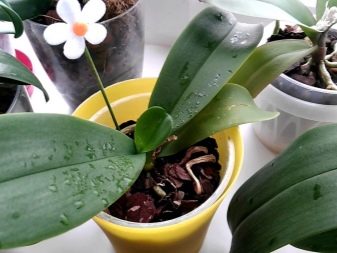
Prevention measures
The tick is a very dangerous pest; not a single farmer is immune from its appearance. However, there are preventive measures when the risk of infection can be minimized. You should strictly follow all the tips and recommendations for caring for orchids, regularly ventilate the premises, and do preventive treatment of flowers. It is recommended to use only a tested substrate.When acquiring new plants, they should be placed in a separate room for a couple of weeks, creating a kind of "quarantine" for them.
In general, gardeners are advised to always follow these guidelines:
- regularly inspect plants;
- once a week, wipe the stems and leaves with a disinfectant;
- watering orchids from a watering can with warm water, this method helps to wash off eggs of parasites and adults;
- make sure that the soil is not too wet or dry;
- remove water droplets remaining in the inflorescences in time;
- watering correctly;
- do not dry out the air in the room, this provokes the active reproduction of parasites;
- spray the plants with water regularly.
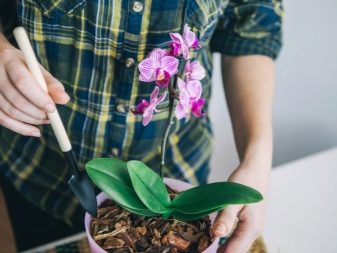
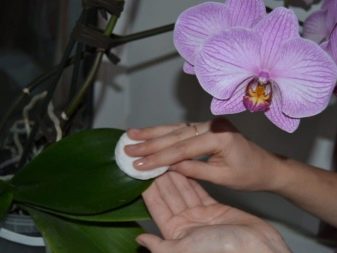
The orchid requires special care, it is a delicate and capricious flower, so the gardener should always keep the situation under control, not letting it go by itself.
For information on how to treat an orchid from thrips and shell mites, see the next video.































The comment was sent successfully.